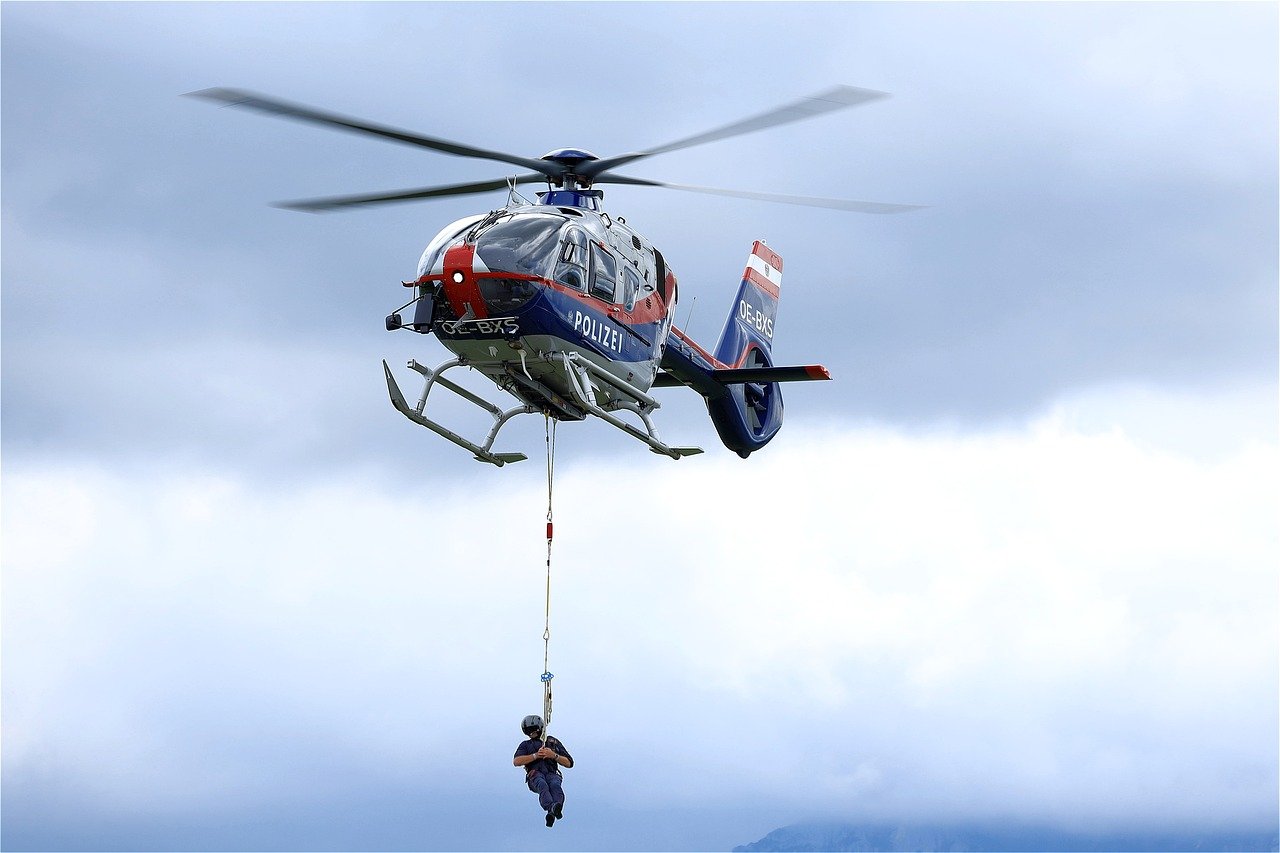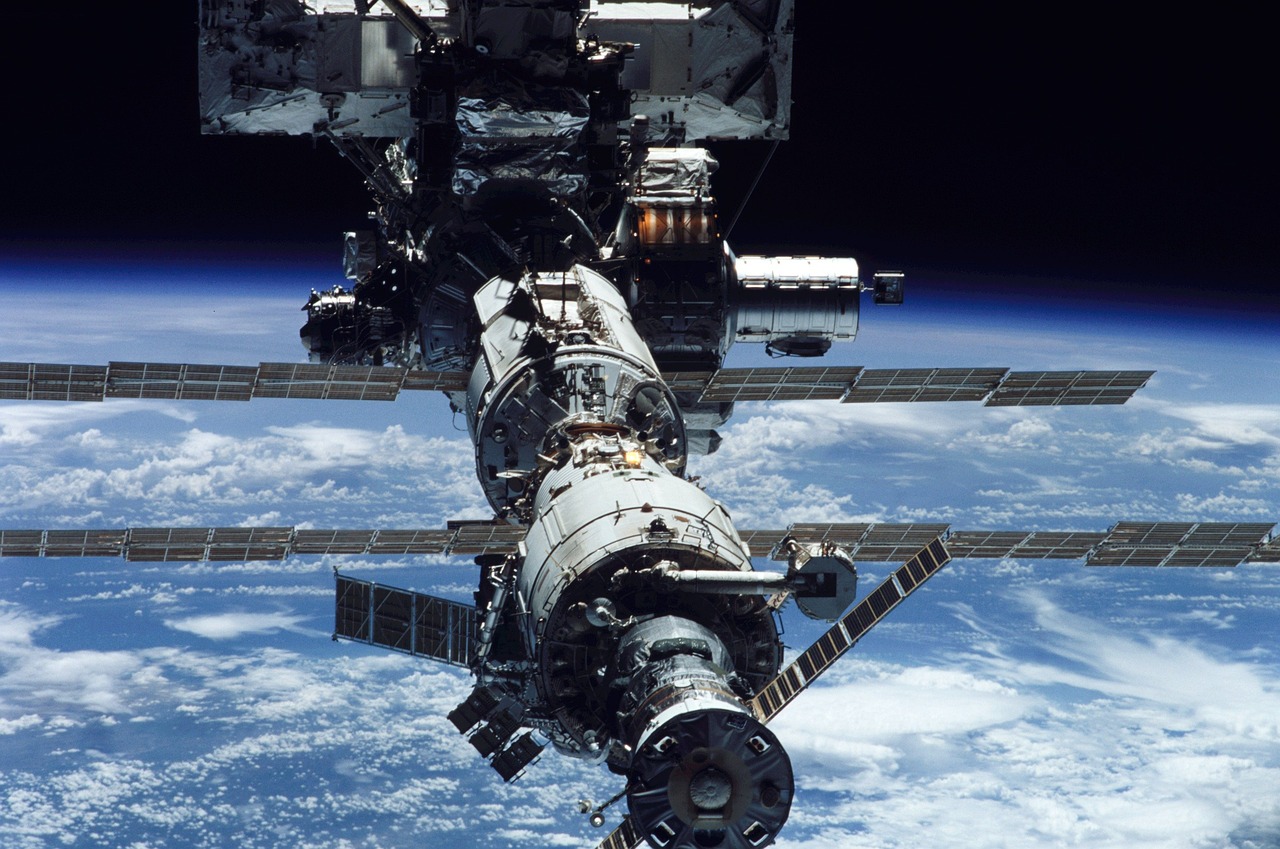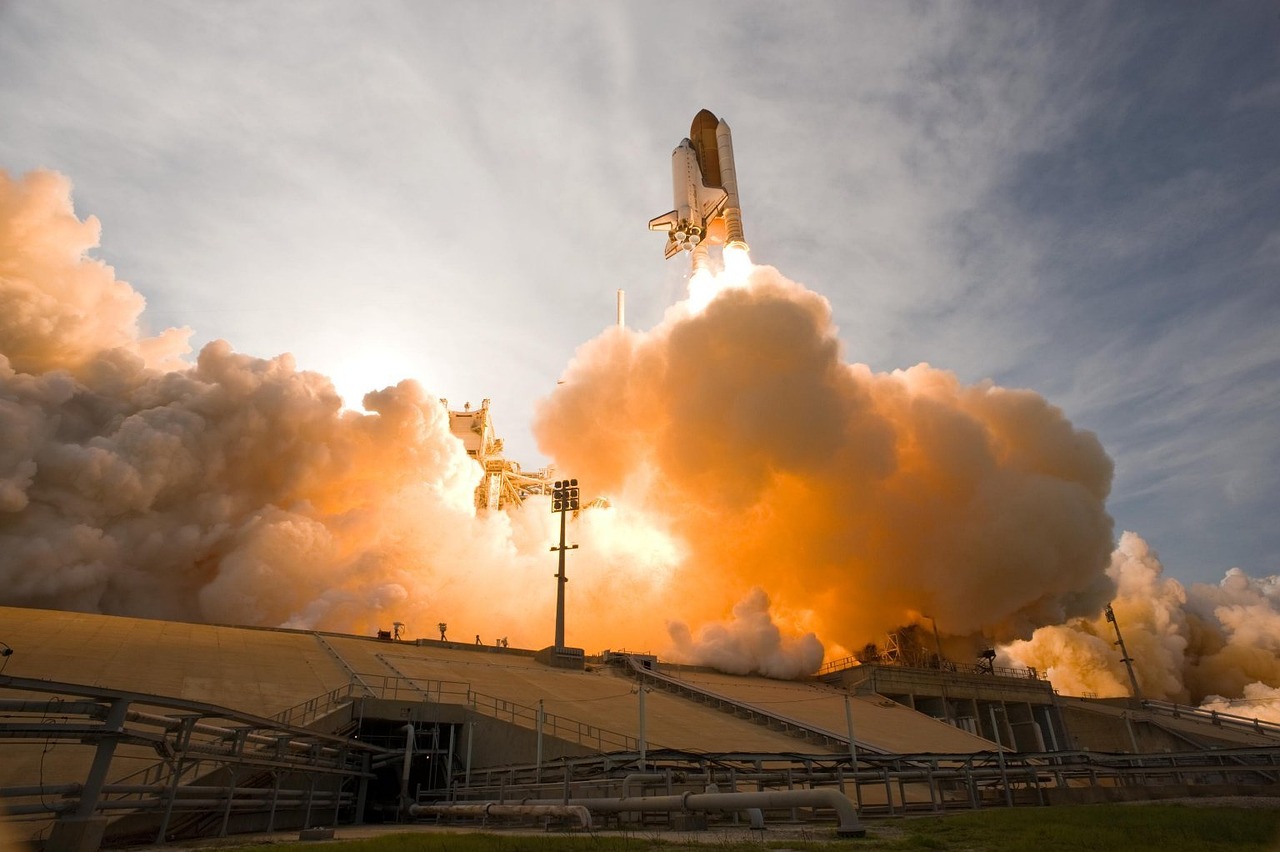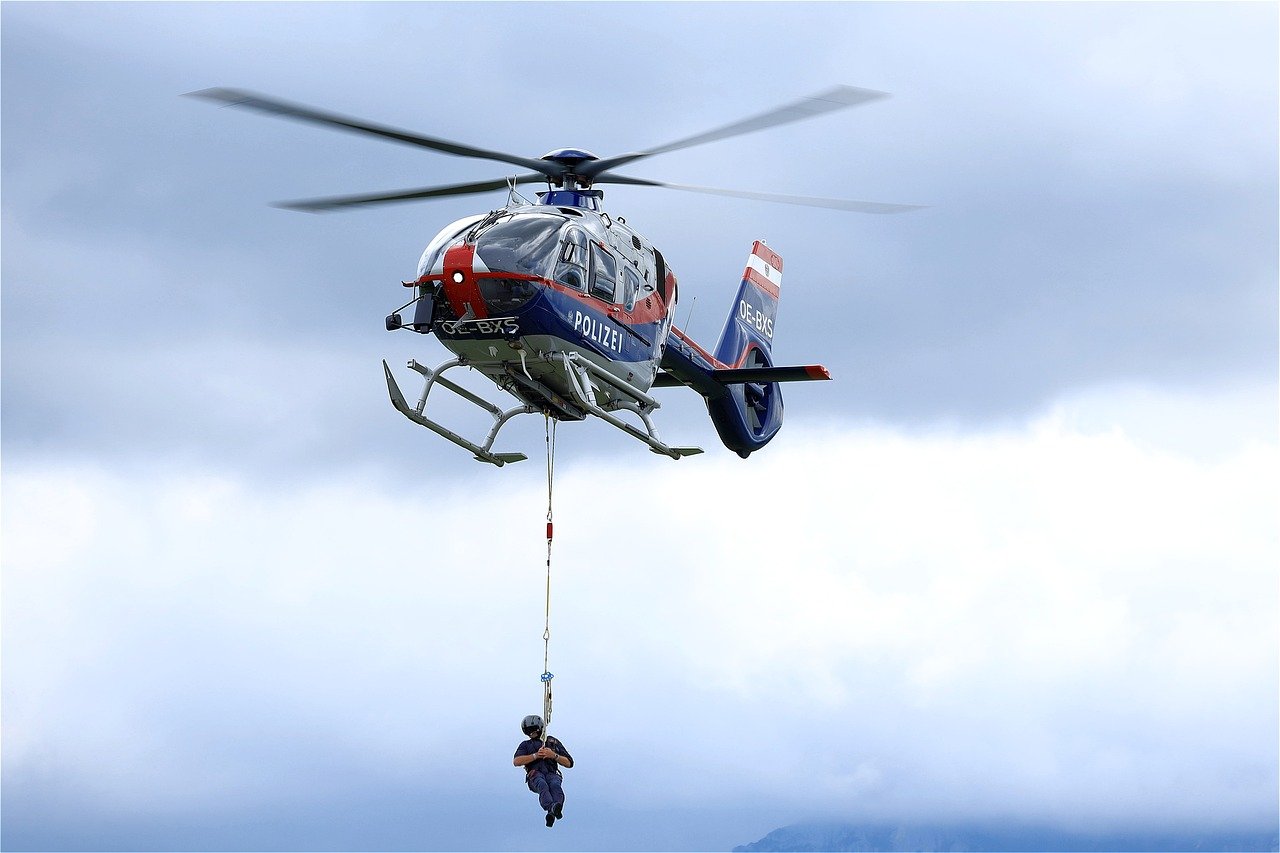The Role of Space Operations in National Defense
In today's rapidly evolving world, the significance of space operations in national defense cannot be overstated. As we venture deeper into the 21st century, the battlefield has expanded beyond terrestrial domains, with outer space emerging as a critical frontier. This article explores how space operations enhance security, strategy, and technological advancements in military capabilities, fundamentally transforming the way nations defend themselves.
Imagine a chess game where the board extends into the cosmos. Each move made by a player affects not just the pieces on the board, but also the strategies of opponents located far beyond the horizon. Just like in chess, space operations allow military forces to maintain a strategic advantage by leveraging capabilities that are essential for modern warfare. These capabilities include communication, navigation, and reconnaissance, which together enhance military effectiveness and situational awareness.
Moreover, the integration of space operations into national defense strategies is not merely about having advanced technology; it is about utilizing these technologies to create a comprehensive defense framework. This framework encompasses everything from satellite systems to ground control stations, all working in harmony to ensure that military forces can respond to threats swiftly and efficiently. Understanding these components is vital for grasping how space operations contribute to national defense strategies.
As we delve deeper into the specifics, we will see how satellite communication systems facilitate real-time data exchange, enabling military forces to coordinate operations effectively. The role of Global Positioning Systems (GPS) cannot be overlooked either, as they are crucial for navigation and targeting, allowing military units to operate in diverse environments with precision. Furthermore, reconnaissance and surveillance satellites are indispensable for gathering intelligence, monitoring enemy movements, and significantly improving decision-making processes.
However, the realm of space operations is not without its challenges. The increasing amount of space debris poses significant risks to operational satellites, necessitating effective management strategies to mitigate these risks. Additionally, as space assets become more intertwined with terrestrial systems, the importance of cybersecurity grows exponentially. Protecting critical infrastructure from cyber threats is no longer optional; it is a necessity for maintaining national security.
Looking ahead, the future of space operations in defense is bright, fueled by advancements in technology and international collaboration. As nations work together to enhance their capabilities in space, the role of these operations in national defense will continue to evolve, shaping global security initiatives for years to come.
- What are space operations? Space operations refer to the activities conducted in outer space to support military objectives, including satellite communications, reconnaissance, and navigation.
- Why are space operations important for national defense? They provide critical capabilities that enhance military effectiveness, situational awareness, and strategic advantages in warfare.
- What challenges do space operations face? Challenges include space debris, cybersecurity threats, and the need for international cooperation in maintaining space security.
- How does GPS technology impact military operations? GPS technology is essential for navigation and targeting, allowing military units to operate with precision and minimize collateral damage.

Importance of Space in Modern Warfare
In today's fast-paced world, space has emerged as a critical battlefield, with its significance in modern warfare growing exponentially. Imagine a chess game where the board extends beyond the Earth, where every move made in space can influence the outcome of terrestrial conflicts. This is the reality of contemporary military operations, where satellites, communication systems, and advanced technologies play pivotal roles in shaping strategies and enhancing national security.
One of the key aspects of space's importance is its ability to provide essential capabilities that directly impact military effectiveness. For instance, communication systems in space ensure that military forces can maintain real-time contact, regardless of the distance. This connectivity allows for seamless coordination and rapid response, which are vital in high-stakes situations. Without these systems, military units would be akin to ships lost at sea, unable to communicate or navigate effectively.
Moreover, the Global Positioning System (GPS) has revolutionized navigation and targeting for military operations. GPS technology enables forces to pinpoint their locations with incredible accuracy, allowing them to navigate through challenging terrains and execute precise strikes. This precision not only enhances operational effectiveness but also minimizes collateral damage, making military actions more ethical and strategic. In essence, GPS acts as the guiding star for modern militaries, illuminating the path to success in complex operations.
Additionally, reconnaissance and surveillance satellites provide invaluable intelligence by monitoring enemy movements and activities. These satellites act as the eyes in the sky, offering a comprehensive view of the battlefield and enabling defense forces to make informed decisions. With the ability to gather real-time data, military planners can anticipate enemy actions, adjust strategies on the fly, and ultimately gain a significant advantage in combat scenarios. The intelligence gathered from space operations is akin to having a well-placed spy who can inform you of your opponent's every move.
Furthermore, space operations contribute to situational awareness, which is crucial for effective military engagement. By tracking and analyzing objects in space, defense forces can prevent potential collisions and ensure the security of their assets. As the orbital environment becomes increasingly congested, maintaining space situational awareness is vital for safeguarding national interests. This proactive approach to space operations allows military leaders to anticipate threats and respond accordingly, ensuring that they remain one step ahead in the ever-evolving landscape of warfare.
In summary, the importance of space in modern warfare cannot be overstated. It provides essential capabilities that enhance communication, navigation, and intelligence-gathering, all of which are critical for successful military operations. As we continue to explore the vastness of space, it’s clear that its role in national defense will only grow, shaping the future of warfare in ways we are just beginning to understand.
- Why is space considered a battlefield? Space is considered a battlefield because it plays a crucial role in military operations, providing essential capabilities like communication, navigation, and surveillance that can turn the tide of conflict.
- How does GPS technology impact military operations? GPS technology enhances military operations by allowing precise navigation and targeting, which improves operational effectiveness and reduces collateral damage.
- What is space situational awareness? Space situational awareness involves tracking and analyzing objects in space to prevent collisions and ensure the safety of national assets.

Key Components of Space Operations
Understanding the key components of space operations is essential for grasping their role in national defense strategies. These components form the backbone of military effectiveness in the vast expanse of space, where traditional boundaries blur and new challenges arise. At the heart of space operations are three critical elements: satellite systems, ground control stations, and launch vehicles. Each of these plays a unique role in ensuring that military forces can operate effectively and efficiently in the modern battlefield.
First, let's delve into satellite systems. These are the workhorses of space operations, providing a range of capabilities from communications to reconnaissance. Military satellites are equipped with advanced technology that allows them to perform various functions, including:
- Communication: Enabling real-time data exchange among military units.
- Navigation: Providing precise location data for troops and equipment.
- Surveillance: Monitoring enemy activities and gathering intelligence.
These satellites operate in different orbits, each tailored to specific missions. For instance, low Earth orbit (LEO) satellites are ideal for reconnaissance due to their proximity to the Earth, while geostationary satellites maintain a fixed position relative to the Earth, making them perfect for communication.
Next, we have ground control stations. These facilities are crucial for managing and operating satellite systems. Ground control stations are responsible for monitoring satellite health, managing data flow, and ensuring that the satellites are performing their intended functions. They act like the command centers of space operations, where skilled personnel analyze data and make real-time decisions. The synergy between satellites and ground control is vital; without effective ground control, even the most advanced satellites would be rendered ineffective.
Finally, let's talk about launch vehicles. These are the vehicles that transport satellites into orbit. The launch process is a complex operation that requires precise timing and coordination. Various types of launch vehicles exist, each designed for specific payloads and missions. The choice of launch vehicle can significantly impact the success of a space operation, as it determines the satellite's orbital insertion and overall mission capability. Here’s a brief overview of some common launch vehicles:
| Launch Vehicle | Payload Capacity | Typical Use |
|---|---|---|
| Falcon 9 | 22,800 kg | Commercial satellites, ISS resupply |
| Atlas V | 18,800 kg | National security missions, scientific payloads |
| Delta IV Heavy | 28,790 kg | Large payloads, military satellites |
In summary, the key components of space operations—satellite systems, ground control stations, and launch vehicles—work together to create a robust framework that enhances national defense capabilities. The integration of these components not only allows for effective military operations but also sets the stage for future advancements in space technology. As we continue to explore the potential of space, understanding these components will be vital for adapting to new challenges and opportunities that arise in this ever-evolving domain.
What are the primary functions of military satellites?
Military satellites primarily provide communication, navigation, and surveillance capabilities, which are essential for coordinating operations and gathering intelligence.
How do ground control stations support satellite operations?
Ground control stations manage satellite health, control data flow, and ensure that satellites are functioning correctly, acting as the command centers for space operations.
What factors influence the choice of launch vehicle?
The choice of launch vehicle is influenced by payload capacity, mission requirements, and the specific orbital insertion needed for the satellite.

Satellite Communication Systems
In the vast theater of modern warfare, play a pivotal role, acting as the backbone of military operations. Imagine trying to coordinate a complex military maneuver without the ability to communicate in real-time. It would be akin to conducting a symphony without a conductor—chaotic and disorganized. These systems enable seamless communication across the globe, ensuring that military forces can coordinate their actions, share vital information, and maintain command and control capabilities regardless of the distance separating them.
At the heart of satellite communication is the ability to transmit data in various forms, including voice, video, and text. This versatility is crucial for military operations where timely information can mean the difference between success and failure. For instance, during a military operation, commanders can receive live feeds from reconnaissance units, analyze the situation on the ground, and make informed decisions almost instantaneously.
Moreover, satellite communication systems are not just limited to voice communication. They encompass a wide range of technologies and services, including:
- Secure Voice Communication: Ensuring that sensitive conversations remain confidential and protected from interception.
- Data Transmission: Facilitating the transfer of large volumes of data, such as intelligence reports and mission updates, in real-time.
- Video Conferencing: Allowing commanders and troops to engage in face-to-face discussions, enhancing collaboration and understanding.
These systems also enhance situational awareness by providing crucial data that can be analyzed to predict enemy movements and strategies. For example, during joint operations involving multiple branches of the military, satellite communication enables different units to stay connected, share intelligence, and execute coordinated actions efficiently. This interconnectedness is essential in a world where threats can emerge from any direction, and the ability to respond swiftly is paramount.
Furthermore, the technological advancements in satellite communication have led to the development of mobile satellite systems that can be deployed in the field. These systems are particularly valuable in remote areas where traditional communication infrastructures are unavailable or compromised. The flexibility and adaptability of these mobile units ensure that military operations can continue smoothly, even in the most challenging environments.
However, the reliance on satellite communication systems also presents challenges. As military operations become increasingly dependent on these technologies, the risk of disruption due to cyber threats or satellite malfunctions grows. Thus, it is imperative for defense strategies to incorporate robust cybersecurity measures and contingency plans to mitigate such risks.
In conclusion, satellite communication systems are not just a technological marvel; they are a fundamental component of modern military operations. They enhance coordination, improve situational awareness, and ultimately contribute to the effectiveness of national defense strategies. As we look to the future, the continued evolution of these systems will be crucial in maintaining a strategic advantage in the ever-evolving landscape of warfare.
1. What are satellite communication systems?
Satellite communication systems are technologies that facilitate communication via satellites, enabling the transmission of voice, video, and data across vast distances.
2. How do satellite communication systems enhance military operations?
They provide real-time communication, improve situational awareness, and enable coordination among military forces, which is essential for effective operations.
3. What challenges do satellite communication systems face?
Challenges include vulnerability to cyber threats, potential satellite malfunctions, and the need for secure communication channels.
4. Are there mobile satellite communication systems?
Yes, mobile satellite systems can be deployed in the field, providing communication capabilities in remote or challenging environments.

Global Positioning Systems (GPS)
The Global Positioning System (GPS) is a game-changer in the military landscape, serving as a backbone for navigation and targeting operations. Just imagine how difficult it would be for military units to maneuver in unfamiliar terrains without the precise location data that GPS provides. It’s akin to trying to navigate a maze blindfolded—nearly impossible! With GPS technology, military forces can pinpoint their locations and the positions of their objectives with remarkable accuracy, often within a few meters. This capability not only enhances operational efficiency but also significantly reduces the risk of collateral damage during missions.
In the realm of modern warfare, GPS is not just about getting from point A to point B; it's about integrating various military assets to create a cohesive operational picture. For instance, aircraft, ground vehicles, and naval vessels all utilize GPS for coordinated strikes and movements. This level of integration allows for real-time adjustments to tactics based on the evolving battlefield scenario, making operations more fluid and responsive. The ability to synchronize movements across different branches of the military is like conducting a finely-tuned orchestra, where every instrument plays its part in harmony to achieve the desired outcome.
Moreover, GPS technology has evolved beyond simple navigation. It's now deeply embedded in targeting systems, allowing for precision strikes that minimize unintended consequences. This is particularly crucial in urban warfare, where the risk of civilian casualties is heightened. By using GPS-guided munitions, military forces can strike with pinpoint accuracy, ensuring that they hit their intended targets while keeping surrounding areas safe. It's a delicate balance, but one that GPS technology helps maintain.
However, the reliance on GPS also introduces vulnerabilities. The system can be susceptible to jamming and spoofing, which could mislead military operations. To counter these threats, the military is investing in enhanced GPS capabilities and alternative navigation systems that can function even in GPS-denied environments. This includes technologies like inertial navigation systems and advancements in satellite technology, ensuring that military forces maintain their edge in any situation.
In summary, GPS is not just a tool; it’s an essential component of modern military strategy. Its ability to enhance situational awareness, improve operational efficiency, and reduce collateral damage makes it indispensable in today’s complex battlefield. As technology continues to advance, we can expect GPS to evolve further, providing even more robust solutions for military operations.
- What is GPS and how does it work? GPS, or Global Positioning System, is a satellite-based navigation system that allows users to determine their exact location anywhere on Earth using signals from satellites.
- How does GPS enhance military operations? GPS enhances military operations by providing precise location data, enabling coordinated movements and targeting, which improves operational efficiency and reduces collateral damage.
- What are the vulnerabilities of GPS? GPS can be susceptible to jamming and spoofing, which can mislead military operations, prompting the need for alternative navigation systems.
- What advancements are being made in GPS technology? Advancements include enhanced GPS capabilities, alternative navigation systems, and improved satellite technology to ensure reliable operations in various environments.

Reconnaissance and Surveillance Satellites
Reconnaissance and surveillance satellites play a critical role in modern military operations, acting as the eyes and ears of defense forces around the globe. These sophisticated machines orbit the Earth, equipped with advanced sensors and imaging technology that allow them to capture detailed information about enemy movements, infrastructure, and activities. Imagine having a bird's-eye view of the battlefield, constantly feeding real-time data back to commanders who can make informed decisions based on accurate intelligence. This capability not only enhances situational awareness but also significantly improves operational planning and execution.
One of the most significant advantages of reconnaissance satellites is their ability to operate in a variety of conditions. They can gather intelligence day or night, regardless of weather conditions, which is a game changer in military strategy. For example, while ground troops might be limited by fog or rain, satellites can still provide clear images and data, ensuring that military operations are not hindered by environmental factors. This capability is crucial for timely decision-making, allowing forces to respond swiftly to emerging threats.
Moreover, reconnaissance satellites are equipped with various types of sensors, including optical, infrared, and radar systems, each serving a unique purpose:
- Optical Sensors: Capture high-resolution images, similar to a digital camera, ideal for identifying specific targets.
- Infrared Sensors: Detect heat signatures, useful for spotting vehicles or personnel even in darkness.
- Radar Systems: Penetrate cloud cover and can provide detailed information about terrain and structures.
Additionally, the integration of reconnaissance satellites with other military assets enhances their effectiveness. For instance, data collected from these satellites can be shared in real-time with ground forces, aircraft, and naval units, creating a networked approach to defense operations. This synergy not only improves coordination but also increases the overall effectiveness of military strategies. In essence, reconnaissance satellites form a vital component of a larger defense ecosystem, enabling a proactive rather than reactive approach to threats.
As we look to the future, the evolution of reconnaissance and surveillance satellites will continue to shape military operations. With advancements in artificial intelligence and machine learning, the ability to analyze vast amounts of data will become even more sophisticated. This means that defense forces will not only receive real-time intelligence but also predictive analytics that can forecast potential threats before they materialize. The sky is literally the limit when it comes to the potential of these technologies in enhancing national security.
In conclusion, reconnaissance and surveillance satellites are more than just tools for gathering information; they are essential assets that empower military forces to operate effectively in a complex and dynamic environment. Their ability to provide real-time, accurate intelligence ensures that defense strategies are informed and effective, ultimately contributing to the safety and security of nations around the world.
- What are reconnaissance satellites used for?
They are used to gather intelligence on enemy movements and activities, enhancing situational awareness and operational planning. - How do reconnaissance satellites work?
They use advanced sensors to capture images and data, which is then transmitted back to military command centers for analysis. - What types of sensors do reconnaissance satellites use?
They utilize optical, infrared, and radar sensors to gather information in various conditions. - Why are reconnaissance satellites important for national defense?
They provide critical intelligence that enables timely decision-making and effective military operations.

Space Situational Awareness
When we think about our daily lives, we often take for granted the vast network of satellites orbiting our planet, working tirelessly to provide us with information and connectivity. However, the realm of Space Situational Awareness (SSA) is far more complex than simply tracking satellites. It involves a comprehensive understanding of the space environment, including the identification, monitoring, and analysis of objects in orbit. This capability is crucial for ensuring the safety and security of not just military assets, but also commercial and scientific satellites that play a vital role in our interconnected world.
Imagine a bustling highway filled with cars, trucks, and buses. Each vehicle has a specific route, speed, and destination. Now, picture this scenario in space, where thousands of objects are traveling at incredible speeds, and even the slightest collision could result in catastrophic consequences. This is why SSA is essential. It provides military and civilian authorities with the tools needed to track these objects, predict potential collisions, and take preventive measures to avoid disasters.
To give you a clearer picture, here are some key components of SSA:
- Tracking Systems: Advanced radar and telescopic systems are employed to monitor the location and trajectory of various space objects.
- Data Analysis: Sophisticated algorithms analyze the collected data to predict potential collisions and assess the risk levels associated with space debris.
- Collaboration: Effective SSA relies on collaboration between nations and organizations to share data and enhance the overall understanding of the space environment.
As the number of satellites continues to rise, so does the issue of space debris—fragments from defunct satellites, spent rocket stages, and even tiny paint flecks from operational spacecraft. This debris poses a significant threat to both operational satellites and crewed missions. Hence, SSA not only helps in tracking these objects but also plays a pivotal role in developing strategies to mitigate risks. For instance, by utilizing predictive modeling, space agencies can perform collision avoidance maneuvers, ensuring that satellites can safely navigate through increasingly congested orbits.
Moreover, the importance of SSA extends beyond just collision avoidance. It also encompasses understanding the behaviors of adversarial satellites, especially in a world where military capabilities are increasingly reliant on space assets. By maintaining robust SSA, nations can safeguard their technological advantages and ensure that their operational readiness is not compromised by unforeseen threats.
In conclusion, Space Situational Awareness is not merely a technical necessity; it's a cornerstone of modern defense strategy. As we move forward, enhancing SSA capabilities will be vital for protecting national interests, ensuring safe navigation in space, and fostering international cooperation in the shared domain of outer space.
- What is Space Situational Awareness?
Space Situational Awareness refers to the ability to detect, track, and predict the movement of objects in space to ensure the safety and security of space operations. - Why is SSA important for national defense?
SSA is crucial for national defense as it helps prevent collisions between satellites, protects military assets, and allows for better strategic planning in space operations. - How is SSA achieved?
SSA is achieved through a combination of tracking systems, data analysis, and international collaboration to monitor and understand the space environment. - What are the challenges associated with SSA?
Challenges include the increasing amount of space debris, the need for advanced tracking technologies, and the necessity for international cooperation to share data and best practices.

Challenges in Space Operations
While space operations are pivotal for enhancing national defense, they are not without their challenges. As we venture deeper into the cosmos, the hurdles we face become more complex and multifaceted. One of the most pressing issues is the proliferation of space debris. Imagine a bustling highway filled with cars, where a single piece of debris can cause catastrophic accidents. In space, this analogy holds true; even tiny fragments can threaten operational satellites, leading to potential loss of vital communication and reconnaissance capabilities.
Space debris originates from various sources, including defunct satellites, spent rocket stages, and fragments from collisions. The increasing density of debris in low Earth orbit (LEO) not only poses risks to current missions but also complicates future launches. To tackle this issue, space agencies and private companies are actively researching debris mitigation strategies. These strategies include:
- Designing satellites that can deorbit themselves at the end of their operational life.
- Implementing active debris removal technologies.
- Enhancing tracking systems to monitor debris and predict potential collisions.
Another significant challenge is cybersecurity. As our military and civilian space assets become increasingly interconnected with terrestrial systems, they also become more vulnerable to cyber threats. These threats can range from hacking attempts aimed at gaining control over satellites to more sophisticated attacks that could disrupt communication networks. The stakes are incredibly high; a successful cyber attack could lead to the loss of critical data, operational capabilities, and even national security. Therefore, robust cybersecurity measures are essential to safeguard these assets. This includes:
- Employing advanced encryption techniques.
- Regularly updating software to patch vulnerabilities.
- Conducting rigorous security audits and assessments.
Furthermore, the need for international cooperation cannot be overstated. As more nations enter the realm of space exploration and military operations, the potential for conflicts and misunderstandings increases. Establishing norms and agreements for responsible behavior in space is crucial to ensure that all nations can benefit from space operations without jeopardizing each other’s assets. Collaborative efforts, such as joint missions and shared tracking data, can help mitigate risks and foster a more secure space environment.
In summary, while the challenges in space operations are significant, they are not insurmountable. By prioritizing debris management, enhancing cybersecurity measures, and fostering international cooperation, we can navigate the complexities of space operations effectively. The future of national defense depends on our ability to address these challenges head-on, ensuring that we can continue to leverage the advantages of space for security and strategic advantage.
Q: What is space debris and why is it a problem?
A: Space debris consists of non-functional satellites, spent rocket stages, and fragments from collisions. It poses a risk to operational satellites and can lead to catastrophic failures in space missions.
Q: How can cybersecurity be improved in space operations?
A: Cybersecurity can be enhanced by employing advanced encryption, regularly updating software, and conducting security audits to protect against potential cyber threats.
Q: Why is international cooperation important in space operations?
A: As more nations engage in space activities, international cooperation is vital for establishing norms and agreements that promote responsible behavior and reduce the risk of conflicts in space.

Space Debris Management
As we continue to explore and utilize space for various purposes, including national defense, the issue of space debris has emerged as a significant challenge. Space debris refers to the remnants of defunct satellites, spent rocket stages, and other fragments resulting from collisions or disintegration. With thousands of pieces of debris orbiting the Earth, the potential for collisions with operational satellites is a growing concern that cannot be overlooked. Imagine driving on a crowded highway where the risk of accidents increases with every additional vehicle; this analogy captures the precarious nature of our orbital environment.
To effectively manage space debris, a multi-faceted approach is required. This includes tracking existing debris, predicting potential collision courses, and implementing mitigation strategies to reduce the creation of new debris. Organizations like NASA and the European Space Agency (ESA) are actively involved in monitoring space debris and developing technologies to address this issue. For instance, the Space Surveillance Network (SSN) plays a crucial role in tracking objects in orbit. The table below illustrates the scale of the space debris problem:
| Type of Debris | Estimated Number |
|---|---|
| Defunct Satellites | 2,000+ |
| Rocket Bodies | 3,000+ |
| Fragments from Collisions | 20,000+ |
| Micrometeoroids | Millions |
In addition to tracking and monitoring, debris mitigation strategies are essential. These strategies may include:
- Designing satellites to minimize debris during their operational life and post-mission.
- Implementing deorbiting plans for defunct satellites to ensure they re-enter the atmosphere safely.
- Using technologies such as nets, harpoons, or lasers to capture and remove larger pieces of debris.
Moreover, international cooperation is vital in addressing the space debris challenge. Countries must work together to establish norms and regulations that promote responsible behavior in space. Just as nations collaborate on climate change initiatives, a similar global commitment is necessary for the sustainability of our shared orbital environment. The future of space operations hinges not only on military capabilities but also on our ability to maintain a safe and navigable space environment.
As we look to the future, the importance of space debris management will only increase. With more nations and private companies entering the space arena, the potential for debris generation rises, making effective management strategies even more critical. By prioritizing space debris management, we can ensure that our space operations remain secure and that we continue to benefit from the advantages that space offers to national defense and global security.
- What is space debris? Space debris includes defunct satellites, spent rocket stages, and fragments from collisions or disintegration in orbit.
- How is space debris tracked? Organizations like NASA and ESA use the Space Surveillance Network (SSN) to monitor and track objects in orbit.
- What are some strategies for managing space debris? Strategies include debris mitigation, deorbiting plans, and the development of technologies to capture and remove debris.
- Why is international cooperation important in space debris management? Space is a shared environment, and collaborative efforts are essential to establish norms and regulations for responsible behavior.

Cybersecurity in Space Operations
In today's digital age, the importance of cybersecurity in space operations cannot be overstated. As military assets increasingly rely on satellite technology for communication, navigation, and reconnaissance, they also become vulnerable to a myriad of cyber threats. Just think about it—every time a satellite sends data back to Earth, it’s like sending a postcard with valuable information that anyone can intercept if they have the right tools. This vulnerability makes it crucial to implement robust cybersecurity measures to protect these critical systems.
Cyber attacks can take many forms, from jamming communications to hacking into satellite systems. The consequences of such actions can be catastrophic, potentially disrupting military operations and compromising national security. For instance, if an adversary gains control over a satellite, they could manipulate its data or even render it inoperable, severely affecting military strategy and situational awareness. This scenario highlights the pressing need for advanced cybersecurity protocols that can safeguard our space assets.
Moreover, the integration of space assets with terrestrial systems further complicates the cybersecurity landscape. As we embrace innovations like the Internet of Things (IoT) and artificial intelligence (AI), the attack surface expands. Each connected device represents a potential entry point for cybercriminals. Therefore, a robust cybersecurity framework must encompass not only the satellites themselves but also the ground control stations and communication networks that support them.
To effectively tackle these challenges, military organizations and space agencies are increasingly adopting a multi-layered approach to cybersecurity. This includes:
- Threat Intelligence: Continuously monitoring and analyzing potential threats to anticipate and mitigate risks.
- Encryption: Utilizing advanced encryption techniques to secure data transmissions between satellites and ground stations.
- Access Control: Implementing strict access controls to ensure that only authorized personnel can interact with critical systems.
- Regular Audits: Conducting frequent security audits and vulnerability assessments to identify and rectify potential weaknesses.
Additionally, collaboration with international partners is essential for enhancing cybersecurity in space operations. By sharing information and best practices, nations can fortify their defenses against common threats. This collaborative spirit is vital, especially in a realm where the actions of one country can have global repercussions. As we move forward, it’s clear that cybersecurity will play a pivotal role in ensuring the safety and effectiveness of space operations, ultimately contributing to national and global security.
- What are the main cyber threats to space operations?
Cyber threats can include hacking satellite systems, jamming communications, and intercepting data transmissions. These threats can disrupt military operations and compromise sensitive information. - How can cybersecurity be improved in space operations?
Cybersecurity can be enhanced through threat intelligence, encryption, strict access controls, and regular security audits. Collaboration with international partners is also crucial for sharing best practices. - Why is cybersecurity in space operations important?
With the increasing reliance on satellite technology for military operations, ensuring the security of these assets is vital for maintaining national security and operational effectiveness.

The Future of Space Operations in Defense
The future of space operations in defense is not just a matter of looking at the stars; it's about understanding how those stars can help us maintain security right here on Earth. As technology continues to evolve at a breakneck pace, the integration of space capabilities into national defense strategies is becoming increasingly sophisticated. Imagine a world where satellites can not only provide real-time data but also predict potential threats before they manifest. This is not science fiction; this is the future we are heading towards.
One of the most exciting prospects is the development of autonomous systems that can operate in space without constant human oversight. These systems will be capable of making decisions based on the data they collect, thereby enhancing operational efficiency. For instance, if a satellite detects an unusual object approaching a sensitive area, it could autonomously adjust its position to avoid a collision or gather more data for analysis. This level of responsiveness could prove invaluable in a crisis, where every second counts.
Furthermore, international collaboration is expected to play a pivotal role in shaping the future of space operations. As nations recognize the importance of space for security, partnerships will likely expand. Collaborative efforts could lead to shared resources, joint missions, and unified strategies to combat common threats. This is particularly crucial in an era where space is becoming increasingly congested, and the potential for conflict in orbit is rising. By pooling resources and expertise, countries can enhance their collective security while ensuring the sustainability of space operations.
Moreover, advancements in artificial intelligence (AI) and machine learning will revolutionize how we analyze data from space. These technologies can sift through vast amounts of information far more efficiently than human analysts, identifying patterns and anomalies that might otherwise go unnoticed. Imagine AI systems that can predict the trajectory of space debris or assess the operational status of multiple satellites simultaneously. This capability will not only improve situational awareness but also enhance decision-making processes, allowing military leaders to respond more effectively to emerging threats.
Another critical aspect of the future of space operations will be the emphasis on cybersecurity. As our reliance on space assets grows, so too does the need to protect them from cyber threats. The integration of advanced encryption methods and robust security protocols will be essential to safeguard sensitive data and maintain the integrity of space operations. This means that defense agencies will need to invest heavily in cybersecurity measures, ensuring that their space assets are as secure as possible.
In conclusion, the future of space operations in defense is poised to be transformative. With advancements in technology, increased international cooperation, and a focus on cybersecurity, we are on the brink of a new era in national defense. As we look to the stars, we must also prepare for the challenges and opportunities that lie ahead, ensuring that our space capabilities remain a cornerstone of our national security strategy.
- What are the primary benefits of space operations in defense?
Space operations enhance communication, navigation, and reconnaissance capabilities, significantly improving military effectiveness and situational awareness. - How does international collaboration impact space operations?
International collaboration allows countries to share resources, expertise, and strategies, enhancing collective security and operational efficiency. - What role does AI play in the future of space operations?
AI will revolutionize data analysis, enabling faster and more accurate identification of threats and improving decision-making processes in defense strategies. - Why is cybersecurity important for space operations?
As space assets become increasingly integrated with terrestrial systems, protecting them from cyber threats is crucial to maintaining national security and operational integrity.
Frequently Asked Questions
- What is the role of space operations in national defense?
Space operations play a crucial role in national defense by providing essential capabilities such as communication, navigation, reconnaissance, and surveillance. These operations enhance military effectiveness and situational awareness, allowing defense forces to respond swiftly and accurately to threats.
- How do satellite communication systems enhance military operations?
Satellite communication systems enable real-time data exchange between military forces, facilitating coordination of operations and maintaining command and control capabilities across vast distances. This connectivity is vital for executing complex missions and ensuring that all units are on the same page.
- What is the significance of GPS technology in the military?
GPS technology is indispensable for navigation and targeting in military operations. It allows military units to operate effectively in various environments, enhancing precision in their actions and minimizing collateral damage, which is crucial for maintaining operational integrity.
- How do reconnaissance satellites contribute to national security?
Reconnaissance satellites provide vital intelligence by monitoring enemy movements and activities. This capability significantly improves decision-making and operational planning for defense forces, allowing them to anticipate threats and respond proactively.
- What challenges do space operations face today?
Space operations face numerous challenges, including the growing issue of space debris, cyber threats to critical infrastructure, and the need for international cooperation to maintain space security. These challenges require innovative solutions and collaboration among nations.
- How is space debris managed in military operations?
Effective management strategies are essential to address the risks posed by space debris to operational satellites. These strategies include tracking debris, developing technologies for debris removal, and implementing guidelines for responsible satellite operations to ensure the sustainability of space activities.
- Why is cybersecurity important in space operations?
As space assets become increasingly integrated with terrestrial systems, the importance of cybersecurity grows. Robust measures are needed to protect critical infrastructure from cyber threats, ensuring the integrity and security of military operations in space.
- What does the future hold for space operations in defense?
The future of space operations in defense looks promising, with advancements in technology and increased international collaboration shaping their role in national defense and global security initiatives. Innovations will likely enhance capabilities, making space an even more integral part of military strategy.



















